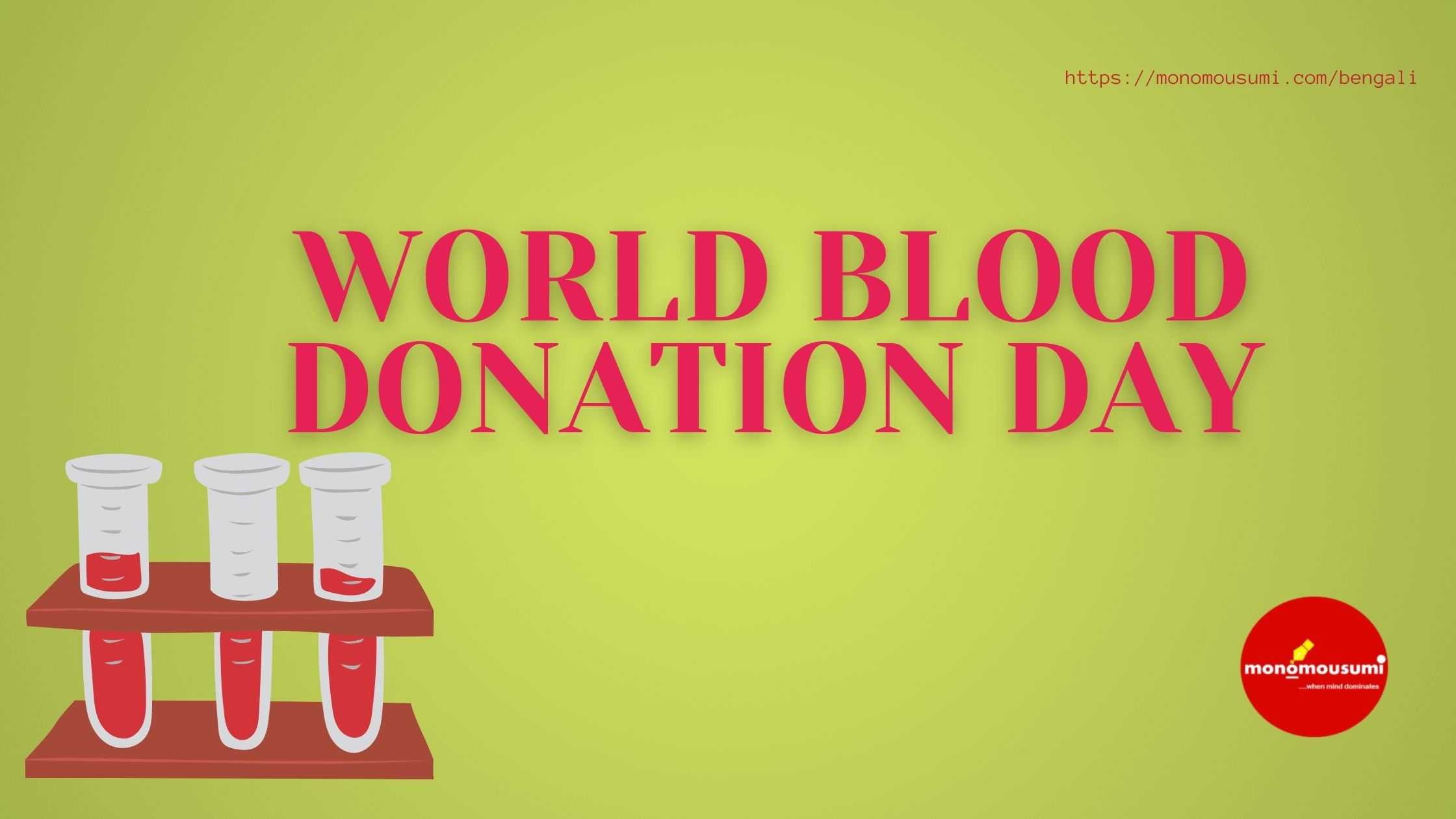
World Blood Donor Day (WBDD) is held on June 14 each year. The occasion became organised for the primary time in 2005, through a joint initiative of the World Health Organization, the International Federation of Red Cross and Red Crescent Societies to elevate cognizance of the want for secure blood and blood merchandise, and to thank blood donors for his or her voluntary, life-saving items of blood. World Blood Donor Day is one in every of eleven respectable worldwide public fitness campaigns marked through the World Health Organization (WHO), in conjunction with World Health Day, World Chagas Disease Day, World Tuberculosis Day, World Immunization Week, World Patient Safety Day, World Malaria Day, World No Tobacco Day, World Hepatitis Day, World Antimicrobial Awareness Week and World AIDS Day.
Transfusion of blood and blood merchandise facilitates and stores tens of thousands and thousands of lives each year. It can assist sufferers who are affected by life-threatening situations, stay longer and with better best of life, and helps with complicated scientific and surgical procedures. It additionally has an essential, life-saving position in maternal and perinatal care. Access to secure and enough blood and blood merchandise can assist lessen fees of loss of life and incapacity because of extreme bleeding for the duration of shipping and after childbirth.
In many international locations, there isn’t a good enough delivery of secure blood, and blood offerings face the venture of creating enough blood available, whilst additionally making sure its best and safety.
A good enough delivery can handiest be confident via normal donations through voluntary unpaid blood donors. The WHO’s purpose is for all international locations to attain all their blood substances from voluntary unpaid donors through 2020. In 2014, 60 international locations had their countrywide blood substances primarily based totally on 99-100% voluntary unpaid blood donations, with seventy three international locations nonetheless in large part depending on their own circle of relatives and paid donors.
History
World Blood Donor Day is widely known each year. through humans round the arena on June 14. It is widely known at the birthday anniversary of Karl Landsteiner on June 14, 1868. Landsteiner was presented the Nobel Prize for his discovery of the ABO blood institution system.
Blood is an essential useful resource for the deliberate remedies and the pressing interventions. It is beneficial for sufferers who’re affected by life-threatening situations for residing longer and with a better best of life. It helps complicated scientific and surgical procedures
Themes
2020: Safe Blood Saves Lives
The subject matter for Blood Donation Day 2020 changed into ‘Safe Blood Saves Lives’.
2019: Safe Blood for All
The subject matter for Blood Donation Day in 2019 changed into ‘Safe Blood for all’.
2018: Be there for a person else. Give blood. Share life
The subject matter for Blood Donation Day in 2018 changed into “Be there for a person else. Give blood. Share life.”
2017: Give Blood. Give Now. Give Often
The subject matter for Blood Donation Day in 2017 centred on blood donation in emergency situations. The first reaction whilst an emergency takes place is “What Can You Do?” and the solution is “Give Blood. Give Now. Give Often” that’s taken with the aid of the World Health Organization.
2016: Blood connects us all
The subject matter of the World Blood Donor Day, blood connects us all, highlights the notions of “sharing” and “connection” among blood donors and sufferers. The WBDD 2016 centred on thanking blood donors at the same time as emphasizing the position of voluntary donation. The 2016 marketing campaign introduced to mild the testimonies of the special humans stored thru blood donation to sell recognition and encourage humans to donate.
The host United States of WBDD 2016 changed into The Netherlands. Williem-Alexander, the king of the Netherlands, opened the rite with the aid of thanking donors.
Importance of donating blood
Safe blood saves lives and improves fitness. Blood transfusion is wanted for:
1. Ladies with headaches of pregnancy, including ectopic pregnancies and haemorrhage earlier than, all through or after childbirth;
2. Youngsters with extreme anaemia frequently because of malaria or malnutrition;
3. Humans with extreme trauma following man-made and herbal disasters; and
4. Many complicated clinical and surgical methods and most cancers sufferers.
It is likewise wished for ordinary transfusions for humans with situations including thalassemia and sickle mobile ular ailment and is used to make merchandise including clotting elements for humans with haemophilia.
There is a steady want for ordinary blood delivery due to the fact blood may be saved for best a confined time earlier than use. Regular blood donations with the aid of using an enough quantity of wholesome humans are had to make sure that secure blood could be to be had on every occasion and anyplace it’s far wished.
Blood is the maximum treasured present that everyone can supply to every other person — the present of life. A selection to donate your blood can shop a life, or maybe numerous in case your blood is separated into its additives — purple cells, platelets and plasma — which may be used personally for sufferers with unique situations.
Benefits
Donating blood has advantages in your emotional and bodily fitness. According to a file with the aid of using the Mental Health Foundation, supporting others can:
1. Lessen stress
2. Enhance your emotional well-being
3. Gain your bodily fitness
4. Assist dispose of terrible feelings
5. Offer a feel of belonging and decrease isolation
Research has observed in addition proof of the fitness advantages that come in particular from donating blood.
Free fitness check-up
In order to offer blood, you’re required to go through a fitness screening. A skilled personnel member plays this check-up. They’ll take a look at you’re:
1. Pulse
2. Blood stress
3. Frame temperature
4. Haemoglobin levels
This loose mini-bodily can provide superb perception into your fitness. It can correctly stumble on troubles that might imply an underlying clinical situation or threat elements for sure diseases.
Your blood is likewise examined for numerous diseases. These include:
1. Hepatitis B
2. Hepatitis C
3. HIV
4. West Nile virus
5. Syphilis
6. Trypanosoma cruzi
Does donating blood decrease your threat of coronary heart ailment?
The studies are blended on whether or not blood donation certainly lowers threat of coronary heart ailment and coronary heart attack.
A 2017 study Trusted Source shows that ordinary blood donations are related to elevated threat of coronary heart ailment probable because of unfavourable. cholesterol levels
However, donating blood often can also additionally decrease iron shops, in step with a 2013 study Trusted Source. This can also additionally lessen the threat of coronary heart attack. High frame iron shops are believed to increase the threat of coronary heart attack.
Regular blood donations had been conceived to decrease blood pressure Trusted Source, however a 2017 study Trusted Source suggests those observations are deceiving and aren’t an actual physiological reaction.
Side consequences of donating blood
Blood donation is secure for wholesome adults. There’s no threat of contracting ailment. New, sterile system is used for every donor.
Some humans can also additionally sense nauseous, lightheaded, or dizzy after donating blood. If this takes place, it ought to best retain some mines. You can lie down together along with your toes up till you feel better.
You may additionally enjoy a few bleeding on the web website online of the needle. Applying stress and elevating your arm for a few minutes will commonly prevent this. You can also additionally broaden a bruise on the web website online.
Call the blood donation middle if:
1. You nonetheless sense lightheaded, dizzy, or nauseous after drinking, eating, and resting.
2. You broaden a raised bump or hold bleeding on the needle web website online.
3. You have arm pain, numbness, or tingling.
During the donation
You have to check in to donate blood. This consists of imparting identification, your clinical history, and present process a short bodily examination. You’ll additionally take delivery of a few statistics about blood donation to read.
Once you’re ready, your blood donation technique will begin. Whole blood donation is the maximum not unusual place form of donation. This is as it gives the maximum flexibility. It may be transfused as entire blood or separated into purple cells, platelets, and plasma for special recipients.
For an entire blood donation technique:
1. You’ll be seated in a reclining chair. You can donate blood both sitting and mendacity down.
2. A small region of your arm could be cleaned. A sterile needle will then be inserted.
3. You’ll continue to be seated or mendacity down at the same time as a pint of your blood is drawn. This takes eight to ten mines.
4. When a pint of blood has been collected, a personnel member will dispose of the needle and bandage your arm.
Other varieties of donation include:
1. Platelet donation (plateletpheresis)
2. Plasma donation (plasmapheresis)
3. Double purple mobileular donation
These varieties of donations are done using a system referred to as apheresis. An apheresis gadget is hooked up to each of your arms. It collects a small quantity of blood and separates the additives earlier than returning the unused additives again to you. This cycle is repeated numerous times over about hours.
Once your donation is complete, you’ll take delivery of a snack and a drink and be capable of taking a seat down and relaxing for 10 or 15 mins earlier than you leave. If you sense faint or nauseous, you’ll be capable of lying down till you sense better.
What to recognise earlier than you donate
Here are a few crucial matters to recognise earlier than you donate:
1. You want to be 17 or older to donate entire blood. Some states let you donate at sixteen with parental consent.
2. You ought to weigh at the least one hundred ten kilos and be in proper fitness to donate.
3. You want to offer statistics about clinical situations and any medicinal drugs you’re taking. These can also additionally have an effect on your eligibility to donate blood.
4. You have to wait at the least eight weeks among entire blood donations and sixteen weeks among double purple mobileular donations.
5. Platelet donations may be made each 7 days, as much as 24 instances in keeping with 12 months.
The following are a few recommendations that will help you put together for donating blood:
1. Drink an additional sixteen oz. of water earlier than your appointment.
2. Eat a wholesome meal that’s low in fat.
3. Wear a short-sleeved blouse or a blouse with sleeves which can be smooth to roll up.
Let the personnel recognise when you have a favoured arm or vein and in case you opt to sit up straight or lie down. Listening to music, reading, or speaking to a person else will let you loosen up all through the donation system.
By Kayalvizhi Saravana Selvam


